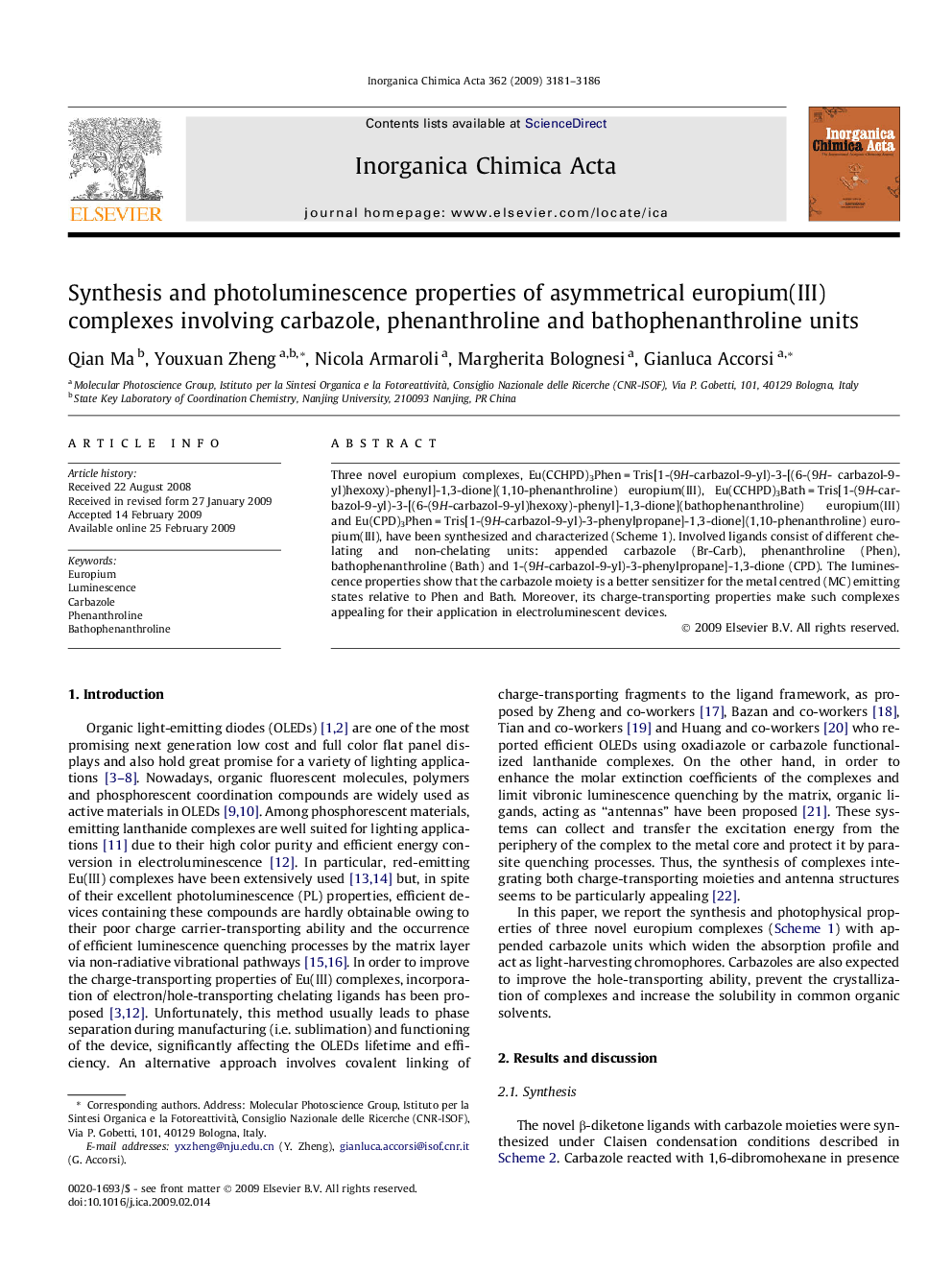| Article ID | Journal | Published Year | Pages | File Type |
|---|---|---|---|---|
| 1308496 | Inorganica Chimica Acta | 2009 | 6 Pages |
Three novel europium complexes, Eu(CCHPD)3Phen = Tris[1-(9H-carbazol-9-yl)-3-[(6-(9H- carbazol-9-yl)hexoxy)-phenyl]-1,3-dione](1,10-phenanthroline) europium(III), Eu(CCHPD)3Bath = Tris[1-(9H-carbazol-9-yl)-3-[(6-(9H-carbazol-9-yl)hexoxy)-phenyl]-1,3-dione](bathophenanthroline) europium(III) and Eu(CPD)3Phen = Tris[1-(9H-carbazol-9-yl)-3-phenylpropane]-1,3-dione](1,10-phenanthroline) europium(III), have been synthesized and characterized (Scheme 1). Involved ligands consist of different chelating and non-chelating units: appended carbazole (Br-Carb), phenanthroline (Phen), bathophenanthroline (Bath) and 1-(9H-carbazol-9-yl)-3-phenylpropane]-1,3-dione (CPD). The luminescence properties show that the carbazole moiety is a better sensitizer for the metal centred (MC) emitting states relative to Phen and Bath. Moreover, its charge-transporting properties make such complexes appealing for their application in electroluminescent devices.
Graphical abstractThree novel asymmetrical europium complexes involving carbazole units have been synthesized and photophysically investigated. The PL properties of Eu(CCHPD)3Phen and Eu(CCHPD)3Bath both in solution and in solid state, show that the most efficient population of the Eu(III) emitting states, via energy transfer process, occurs from the carbazole units.Figure optionsDownload full-size imageDownload as PowerPoint slide
